Astronomy 10: Lecture 3
Lecture 3
Thursday, May 30th 2002. Reading: Cosmic Perspective Chapt. 2 & S1
Review: Cause of the Seasons
Earth's Seasons Are Caused by the Axial Tilt!
Seasons happen because sunlight is distributed over the surface of Earth differently throughout the year, NOT because the Earth is closer or farther away.
When Sunlight is direct is delivers more energy per unit surface area than when it is indirect (or oblique).
Tilt also causes length of days to change. During summer, days are longer and sunlight is more direct. During winter, days are short and sunlight is more oblique.
Earth's rotation axis Precesses about in a 26,000 year cycle. This Changes the Date of Equinoxes and Solstices.
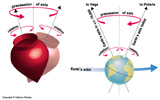
Phases of the Moon
Over the course of about a month the Moon is observed to cycle through a sequence of phases. As it changes its phase it also changes its position in the sky relative to the Sun. Hence, it rises and sets at progressively different times during the month. The phases and their positions relative to the Sun in the sky are given below:
- New Moon : With the Sun in the Sky
- Waxing Crescent : between 0° and 90° East of the Sun
- First Quarter : About 90° East of the Sun
- Waxing Gibbous : between 90° and 180° East of the Sun
- Full Moon : Opposite the Sun in the sky (180° East and West of the Sun)
- Waning Gibbous : between 180° and 90° West of the Sun
- 3rd (Last) Quarter : About 90° West of the Sun
- Waning Crescent : between 90° and 0° West of the Sun
One possible explanation for this phenomenon is that the phases are caused by clouds covering up parts of the Moon. This idea is quickly defeated when one observes a non-full Moon when there is not a cloud in the sky. Plus it's highly unlikely that clouds would cover the Moon the same way every month.
Another explanation is that the Moon is being covered by Earth's shadow in some kind of partial eclipse. Two things here don't make sense. One is that the Moon is Full when it's opposite the Sun in the sky that should be when it is covered the most by any Earth shadow. Also we would predict to see shapes where the Earth's shadow has taken only a tiny slice out of the Moon, and another where it has taken a sizeable slice. Neither shape is seen as part of the normal phases.
The answer is that the Moon is always illuminated by the Sun and that as it orbits Earth we see different amounts of the part of the Moon in sunlight and the part of the Moon in darkness.
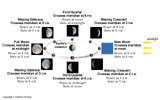
First Note: Earth appears to have phases as seen by the Moon, but they are the exact opposite phases as those seen of the Moon by Earth inhabitants at the same time.

Second Note: The Moon always shows the same face to Earth. Thus, it makes one complete spin on it's axis per orbit around Earth. -> Synchronous Rotation.

Synodic and Sidereal Periods
The time for Earth inhabitants to see the Moon go through one complete set of phases is known as its Synodic Period. If we start at New Moon, Earth, Sun, and Moon are all lined up. We will see a New Moon again on Earth when this configuration repeats. But this is not the same time as the time for the Moon to complete one full circuit around Earth. That time is called the Sidereal time (relating to the stars). The stars are all so far away that they define a local coordinate frame at rest. From the standpoint of this frame the Moon must move a little bit farther in its orbit to come into alignment again with the Sun and allow us Earthlings to see it as New again. The Moon's Sidereal Period is about 27 days and its Synodic Period is about 29 days.
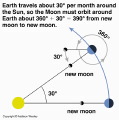
Eclipses
We live in a special time in the history of the Earth-Moon system. In the present epoch the Moon is at sufficient distance to appear in the sky exactly the same angular size as the Sun. The Sun is 390 times bigger than the Moon, but the Moon is 390 times closer. This means that when the Moon moves in front of the Sun to eclipse it it does so exactly. In the past the Moon was closer and in the future the Moon will be further away.
Eclipses occur when the Earth, Moon, and Sun are lined up to allow one body to fall into the path of the other's shadow. An eclipse of the Sun occurs when the Moon is between the Earth and Sun and it's shadow touches the surface of Earth. A Lunar Eclipse occurs when the Moon is opposite the Sun in the sky and passes into Earth's shadow. Why don't these eclipses happen every month at New and Full Moon? Because the Moon's orbit around the Earth is tilted with respect to the ecliptic by about 5°. So most of the time they miss each others shadows.
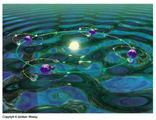
Solar Eclipses
There are two basic types of Solar eclipses:
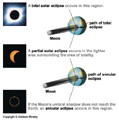
- Annular Eclipses: these occur when the Moon is at it furthest distance in its elliptical orbit and appears slightly smaller in angular size than the Sun. Thus it does not cover the Sun completely but leaves a ring (annulus) around it during the eclipse.

- Total Eclipse: These occur when the Moon completely covers the disk of the Sun. It lasts for only a few minutes as seen from any given location. The Shadow that is moving across the Earth is only a few hundred miles in diameter and moving at a couple of thousand miles an hour across Earth's surface. Those places not inside the direct path of the shadow may see some kind of partial eclipse. During totality the Chromosphere and Corona of the Sun can be seen. Normally they cannot because they are too dim compared to the Photosphere.
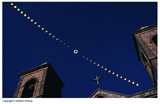
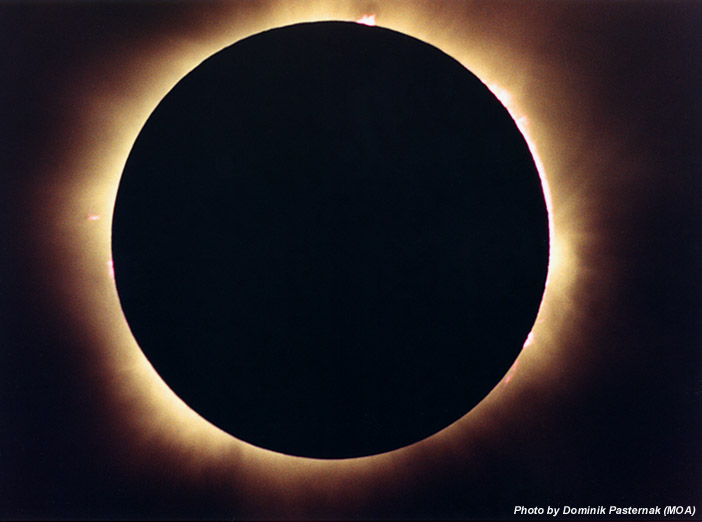
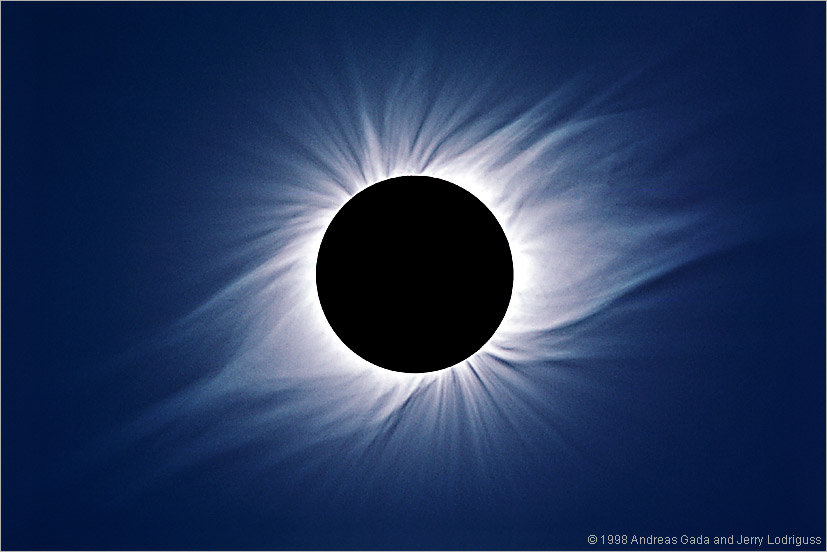
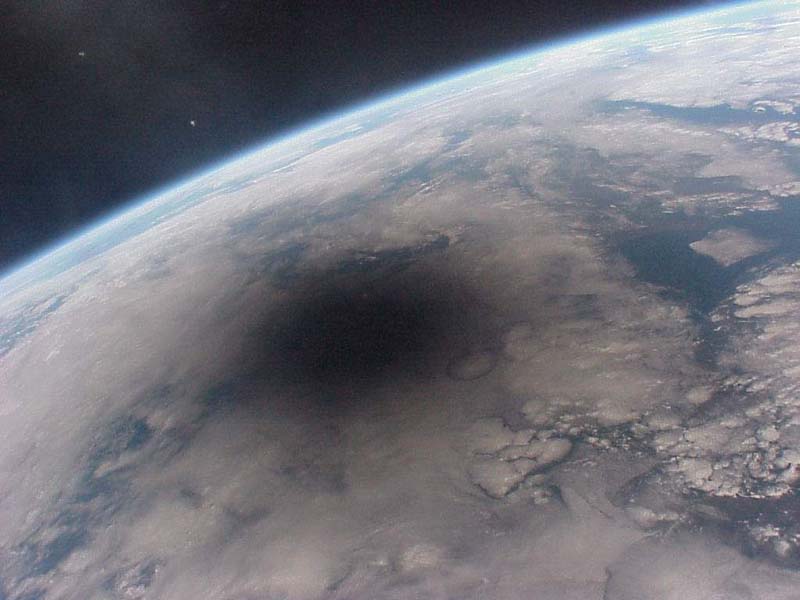
Lunar Eclipses
When the Moon is eclipsed it is visible from everywhere on Earth. It lasts for many hours as the Moon first moves into the Penumbra of Earth's shadow and then finally into the Umbra. It often turns a deep red color because some light is still reaching it. This light is light being lensed by Earth's atmosphere and is red for the same reason that sunsets are red.


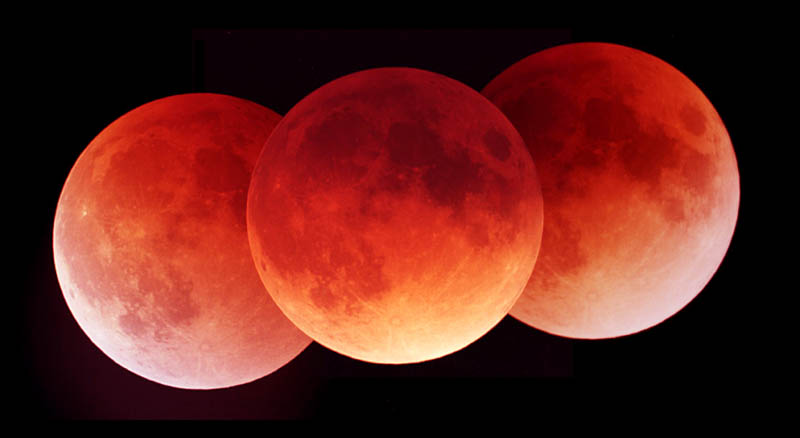
Return to Class Notes Page











